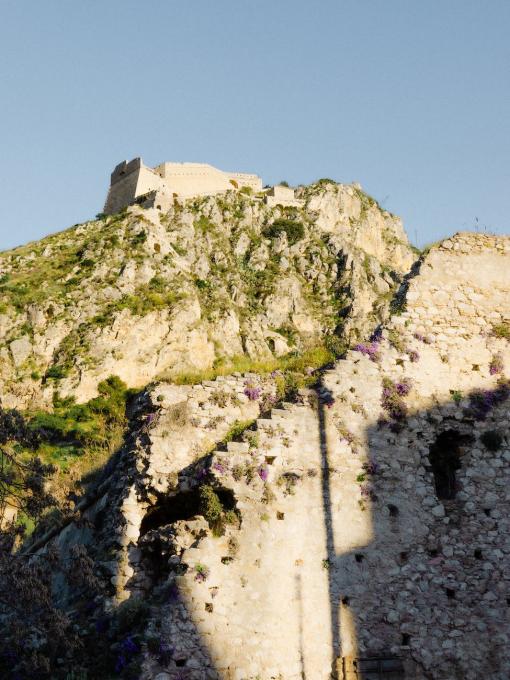
Out of all the sites I visited and all the ones listed in this book, I liked Messini the best, probably because the layout of the site is open and there’s been enough reconstruction of the columns etc, to give the visitor a great idea of how the place would have looked when it was in its prime. There’s also the fact that few tourist buses come here. In one way, this is a shame as the site deserves to be seen by more people, but it means a less hectic visit for those who do come here. There’s plenty of room and time to appreciate the site without hordes of people crowding around.
When establishing their town, the people were trying to keep as far away from The Spartans as possible even though Sparta wasn’t that far away on the other side of the mountains from Messini. This didn’t work as the Spartans destroyed the city, though soon afterwards the Thebans defeated the Spartans at the Battle of Leuctra in 371 BC, largely thanks to the Sacred Band and the general Epaminondas. It was Epaminondas who rebuilt Messini. Eventually, the Spartans got their man as a Spartan killed the Theban general at the Battle of Mantineia in 362 BC.
Between the agora and the theatre, the Arsinoe fountain-house was the first building I came across and is one of the oldest buildings in the city, dating from a time between the end of the 4th century BC and the beginning of the 3rd century BC. This house was a thirty-six metre long Doric Stoa with a fountain dedicated to Arsinoe, the mother of Asclepius.
I continued via the North Stoa of the Agora, the Roman Baths, the Basilica, the Stoa of the Meat Market, The Temple, the Treasury, and the wonderfully detailed frieze of the Doric Stoa. The next place was the sanctuary of Asclepius known as an Asclepieion.
An Asclepieion included carefully controlled spaces conducive to healing. Treatment at these temples centred around promoting healthy lifestyles, with a particular emphasis on a person’s spiritual needs. Characteristic of an Asclepieion was the practice of incubatio, known as ‘temple sleep.’ This was a process by which patients would go to sleep in the temple precincts with the expectation Asclepius himself would visit them. During the Dream, the patient would hear from Asclepius what it was they needed to do in order to cure their ailment. If Asclepius didn’t pay them a visit, the patient would instead report their dream to a priest. The priest would interpret the dream and prescribe a cure. To me, this sounds like psychoanalysis. It also assumes that people can remember their dreams. Close by are an odeon and a bouleuterion or council chamber.
